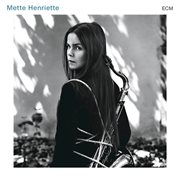Review by Booklist Review
On August 29, 1952, musician David Tudor took a seat on a piano bench in Maverick Concert Hall, started a clock, and played absolutely nothing for 4 minutes and 33 seconds. That moment hangs in the air while the story introduces the composer of the unusual piece, John Cage, as someone who adored inventing new ways of making music, even challenging the definition of "music." He noticed that even the "silent" moments in the world were filled with a cacophony of natural noises, and he longed to convey this to others. The book returns readers to the concert hall, noting that it made some people furious. But the unusual composition was no joke: 4'33" was a sincere experiment in bringing attention to the something in "nothing." The utterly enchanting story functions as a brief Cage biography and an intro to an infamous performance, but it acts more as a celebration of the human experience, perfectly capturing the quiet tension of the concert hall and the unusual, exuberant life of the composer. Gloriously sprawling illustrations and lyrical text give the audience permission to contemplate the quiet and the physical space to do so, and even the most boisterous reader will surely sit in silence for a moment. An exceptional exploration of absolutely "nothing" that feels particularly radical in an ever-bustling and connected world.
From Booklist, Copyright (c) American Library Association. Used with permission.
Review by Publisher's Weekly Review
John Cage (1912--1992) composed "like he didn't know what no meant," pushing boundaries with his inventive musical style, but for his "most important" piece, 4'33", Cage composed "nothing." Hoping audience members would "hear how much something there was in nothing," Cage arranged for a pianist to sit, without playing, in a quiet concert hall for four minutes and 33 seconds, "letting the audience hear what was inside the silence." While the first audience felt tricked, the piece slowly became an oft-performed classic "written by the listener.... And that listener can be you." Repeatedly commenting on the size of Cage's ears while weaving a survey of the figure's life and career into the description of 4'33", Day's text uses a choppy, repetitive sentence structure to drive the book's rhythm. Raschka's broad watercolor strokes create bold shapes, pops of color, and disproportionate figures that add a playful undercurrent to the discussion of Cage's avant-garde work. A biographical note concludes. Ages 4--8. (Apr.)
(c) Copyright PWxyz, LLC. All rights reserved
Review by Horn Book Review
The very definition of music is explored in this thoughtful look at Cage's (1912-1992) controversial musical composition, 4'33", a work that debuted with a pianist "performing" four minutes and thirty-three seconds of silence in a barn in Woodstock, New York, in 1952. While there was no piano performance in the traditional sense, the absence of music amplified other sounds, such as whispers, coughs, chairs moving, and the noises of the outside world. Cage believed that "there is always something to hear inside the silence," and the book encourages readers to listen even when it feels like there is nothing to hear. It also emphasizes the art of doing nothing. Twice, the word nothing is scrawled in cursive on a double-page spread featuring just that word, giving readers space to pause and absorb the concept. Raschka's stunning illustrations further these heady concepts: staff lines, disembodied notes, accidentals, and oddly placed clefs visually capture Cage's spirit. Watercolor, pencil, and ink lend themselves well to the task of representing audiences, musicians, and experimental sound art, offering details at times and at other times just suggesting things through outlines and splotches of color. The book deftly pivots in time between Cage's childhood, the Woodstock performance, and his impact on music broadly. Extended back matter on Cage's life and work round out the book. Pair this introduction to the experimental musician with Rogers and Na's Beautiful Noise (rev. 11/23). Julie Hakim AzzamMarch/April 2024 p.109 (c) Copyright The Horn Book, Inc., a wholly owned subsidiary of Media Source, Inc. No redistribution permitted.
(c) Copyright The Horn Book, Inc., a wholly owned subsidiary of Media Source, Inc. No redistribution permitted.
Review by Kirkus Book Review
An introduction to Cage's (in)famous concert work that asks the musical question: What is to be heard when no lyrics, no score, and no instruments are played? Describing, and then in a far wordier postscript explaining, what the piece known only by its length is all about, Day recounts its 1952 premier, during which pianist David Tudor sat on stage for the indicated time doing--as Raschka repeatedly inscribes with page-filling glee in his luminous, exuberantly brushed images of the scene--"nothing." Audience reactions were understandably mixed: "We have been tricked, they say. They do not use their inside voices." But it wasn't a trick; Cage, gifted since birth with (as the author puts it) "massive ears," wanted audiences to realize that "there is always something to hear inside the silence." He goes on to explain that each time the piece is performed, "the audience hears something different. They hear whatever there is to be heard in that moment." Younger readers should have no trouble buying in to the notion, and for older foot draggers, the ensuing smaller-type essay eloquently builds a case for Cage's sincerity with further details about his boundary-pushing works and his involvement with Zen. The backmatter also includes photos of the composer, a copy of the "score," and a bibliography of titles aimed mostly at adults. Goofy yet profound. (Informational picture book. 6-9) Copyright (c) Kirkus Reviews, used with permission.
Copyright (c) Kirkus Reviews, used with permission.

